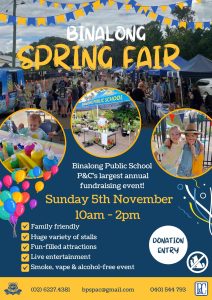
Binalong is a small town of approximately 500 people nestled in gently wooded hills on Burley Griffin Way and the perfect place to stop for those looking to get out in the country for a Sunday drive or stay a few days.
The name Binalong derives from the Indigenous meaning ‘towards a high place’, or from the noted Aborigine, ‘Bennelong’, with the traditional owners being the Ngunnawal (Ngunawal) people.
Hamilton Hume explored in 1821, returning in 1824 with William Hovell during their expedition to Port Phillip Bay. Settlement followed and today outstanding examples of period architecture can be seen with the Commercial Hotel, built in 1842, Cobb & Co (1847), the police station and court house (1883), post office, St Thomas’s church (1886), the royal hotel and the blue stoned buildings of St Patrick’s church (1859) and the mechanics institute (1912).
Binalong has two claims to fame: The famous poet AB ‘Banjo’ Paterson went to Primary School here and it’s the final resting place of bushranger the ‘Flash’ Johnny Gilbert.
Binalong was a hive of activity for notable bushrangers, Ben Hall, Johnny Gilbert, John O’Mealley and John Vane. A mural in Pioneer Park, Fitzroy St, depicts the story of the gun fighting death of ‘Flash’ Johnny Gilbert by police, as told by Banjo Paterson in his poem ‘How Gilbert Died’. Gilbert’s grave is located just off the Burley Griffin Way towards Harden.
Binalong is very caravan friendly with free camping at the local recreation oval or multiple accommodation options within the town.

